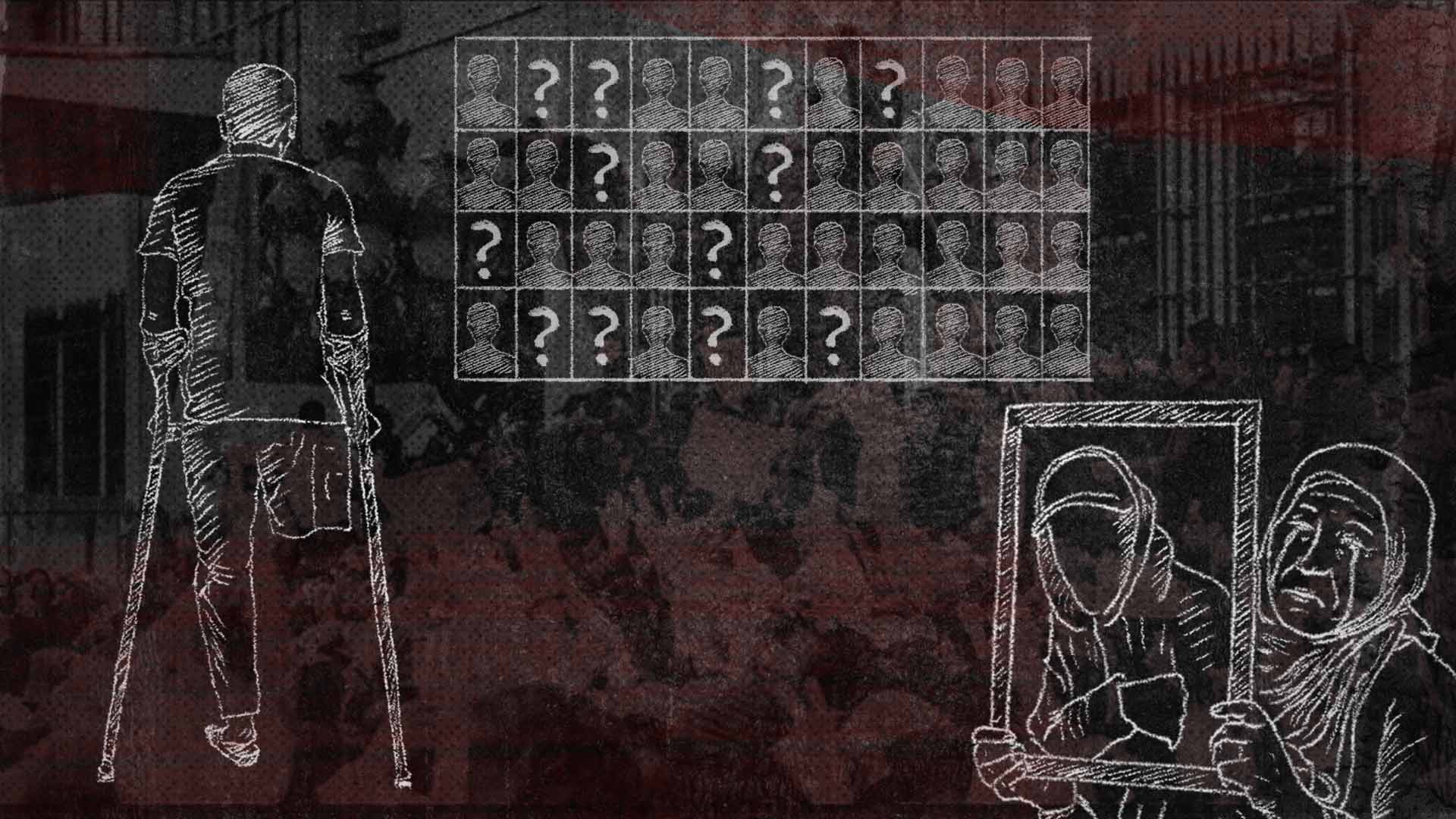Who is behind this long-awaited list? Who was responsible for it? The government only designated the task to the Commission of Martyrs and Wounded of the Revolution, which falls under the Higher Committee for Human Rights and Fundamental Freedoms (CSDHLF) - a task defined by Decree-Law 97 of October 24, 2011, and amended and supplemented by Law 26 of December 24, 2012.
The above commission is composed of 14 members who were appointed by the Head of Government. From Defense, to Justice, to Interior, almost all of the ministries were represented, as well as some representatives of civil society. "The cases of the martyrs and wounded concern the Ministry of the Interior or the Ministry of Defense. The Commission therefore had access to this information, and had every means at its disposal", explains Elyes Ben Sedrine, the former deputy director in charge of investigations within the Truth and Dignity Commission (IVD), who worked specifically on the file of the martyrs and wounded of the Revolution.
According to the same law, the person in charge of the CSDHLF is also the one who heads the Commission of Martyrs and Wounded of the Revolution. Until early April 2021, this was Taoufik Bouderbala.
"IT IS NOT CREDIBLE THAT THERE ARE LESS THAN 700 WOUNDED PEOPLE ON THE LIST"
Origins of the martyrs of the Revolution
Taoufik Bouderbala was also the head of the National Commission of Investigation, established on February 18, 2011, the role of which was to document the abuses and violations that took place during the Revolution.
Their report, published in 2012, listed 2147 wounded and 338 people killed. "In light of the final report of the National Commission of Investigation", the members of the Commission of Martyrs and Wounded of the Revolution were then required to draw up the official list.
"This report was a starting point for the work of the Commission", explains Elyes Ben Sedrine.
In the end, the official report only recognises about a third of the martyrs and wounded that were listed in the 2012 report.
Member of parliament and lawyer Leila Haddad is regularly in contact with the families of the martyrs and the wounded, and asserts that "it is not credible that there are less than 700 wounded people on the list”.
Origins of the wounded of the Revolution
She argues that "the Bouderbala Commission has not conducted the necessary investigations. The people in charge of the investigation did not go in person, did not cross-check events, did not visit the military courts to verify the trials that had already taken place and those that were ongoing".
According to her, this would explain why some people who are supposed to be on the official list did not make the cut. However, Decree 1515 from May 14, 2013 details the functions and means available to the Commission to successfully complete its work.
The committee members were supposed to go on-site to verify the facts, hear testimonies and obtain all the documents they needed from the relevant authorities.
Inkyfada was not able to confront Taoufik Bouderbala on these matters, and despite being contacted on numerous occasions, he did not respond to any interview requests.
A Blurry Definition
In addition to the report, the drafting of this list was also based on two official criteria defined by the law that recognises the martyrs or wounded of the Revolution, the first of which is the definition itself. They are, according to the law, "People who risked and sacrificed their lives in order to carry out the Revolution and ensure its success, and who, as such, have been martyred or physically disabled between December 17, 2010, and February 28, 2011”.
The second criterion only specifies that the extent of physical disability must meet at least 6% for the person to be considered as ‘wounded from the Revolution’. According to the law, this is determined by a technical commission established within the Ministry of Social Affairs.
The lack of more precise information raises questions for the general public. "What does 'the one who sacrificed his life' mean? Is someone who went out to buy bread and was struck by a bullet considered a martyr?", asks Elyes Ben Sedrine.
WHAT DOES THE LAW OFFER THE MARTYRS AND THE WOUNDED?
The decree-law 97 and law 26 do not merely regulate the creation of an official list, but also allocate the compensations for beneficiaries of the martyrs as well as the wounded of the Revolution: a monthly pension and free access to public health facilities and public transport.
However, the monetary amount of the pension has not yet been decided. According to Abderrazak Kilani, president of the
"General Instance of Resistance fighters, martyrs and wounded of the Revolution and terrorist operations", it is still being discussed and will depend on the state budget.
According to Lamia Farhani (the lawyer heading the association ‘Awfia’ [Loyalists] that works in favour of the families of martyrs and wounded of the Revolution), most of them have received compensation under Decree-Law 40 of May 19, 2011, regulating "compensation of damages resulting from civil uprising and popular movements in the country", long before the official list was published.
The mentioned decree-law provides for the allocation of compensation for the wounded and the beneficiaries of the martyrs. The amount was set by a decree issued by the Prime Minister. 6000 dinars for the wounded and 40,000 dinars for the families of martyrs, paid out as part of two instalments in 2011 and 2012. These people also got transportation and health care cards (only for the wounded) allowing them to travel and get free treatment in public facilities.
Withdrawal OF COMPENSATION FOR NON-LISTED VICTIMS
These compensations were provisionally established in 2011 by the Ministry of the Interior. According to Abderrazak Kilani, these compensations were put in place "in an effort to appease" the situation at the time. "Now they pose a legal problem: for those who have received compensation but are not on the list, is the state entitled to ask them for reimbursement?", he wonders. "Normally, you need legal recognition to receive these compensations."
"It is now becoming a headache.”
The latter states that transportation and health care cards will be withdrawn from people who are not on the official list as of June 30.
Other grey areas still remain, such as the reasons behind the delay of the list, the situation of the wounded and families of martyrs who are no longer on the official list, or the status of the transitional justice trials.
These are the questions that will be answered throughout the coming episodes of this series "The Chronicles of the Controversial List of Victims of the Revolution", which explores the drafting of the official list of martyrs and wounded of the Revolution, as well the debates it has and continues to spark since its release.




